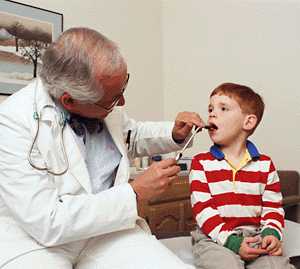
What is an Osteopathic
(ah'-stee-oh-path'ic)
Physician?
Also known as a Doctor of Osteopathy
Isn't it time you learned more? 
If you're looking for a doctor who will take time to know you as a whole person ...
a medical professional who can provide complete care for you and your family ...
who will emphasize wellness, not just treat illness ...
who can help you to develop a healthy lifestyle ...
and who will use all available diagnostic and treatment techniques ...
then isn't it time you called an osteopathic physician?
Home Page
DOs are complete physicians, licensed to perform surgery, prescribe medication, and specialize in all areas of medicine, from neurosurgery to psychiatry. They incorporate non-invasive therapies into their spectrum of care, enabling them to provide the most comprehensive treatment available. There are nearly 40,000 DOs in the U.S. today.
DOs stress preventive medicine and offer a complete approach to care, treating the body as an integrated whole. They consider heredity, job and home environments, diet, and exercise, and take time to explain how lifestyle can affect your health. And DOs believe that listening is critical to effective diagnosis and treatment.
DOs receive training in the musculoskeletal system, and may utilize osteopathic manipulation as a non-invasive means of diagnosing and treating illness and injury, while encouraging your body's tendency toward good health.
"An osteopathic physician (D.O.) is a holistic physician who uses preventive health care, hands-on manipulation, medications and surgery to help the patient maintain or achieve a health state."
Basic philosophical principles of Osteopathic Medicine
Tenets of Osteopathic Medicine
First, do no harm. A thoughtful diagnosis should be made before exposing the patient to any potentially harmful procedure.
Look beyond the disease for the cause. Treatment should center on the cause, with effect addressed only when it benefits the patient in some tangible way.
The practice of medicine should be based on sound medical principles. Only therapies proven clinically beneficial in improving patient outcome should be recommended.
The body is subject to mechanical laws. The science of physics applies to humans. Even a slight alteration in the body's precision can result in disorders that overcome natural defenses.
The body has the potential to make all substances necessary to insure its health. No medical approach can exceed the efficacy of the body's natural defense systems if those defenses are functioning properly. Therefore, teaching the patient to care for his own health and to prevent disease is part of a physician's responsibility.
The nervous system controls, influences and/or integrates all bodily functions.
Osteopathy embraces all known areas of practice.
Excerpted from A Historical Perspective on the Philosophy of Osteopathic Medicine, by Robert E. Suter based on the writings of A.T. Still, Student Doctor, December 1986
The osteopathic profession was begun in the late 19th century by Andrew Taylor Still; a man of strong passions, he was both a supporter of women's rights and an outspoken abolitionist. When the Civil War broke out, Still, not surprisingly, entered the Union Army to enlist in the fight to crush slavery and worked as a regimental surgeon. After a series of medical tragedies in his own family, Still dedicated himself to the study of the physical and mechanical structure of the human body.
In 1874 Still laid the cornerstone of Osteopathy by describing the principles and philosophy on which the profession was to be based. This philosophy viewed the human body as a single organism in which each part interacts with and influences every other part. D.O.s, therefore, are taught to treat each patient as a whole person, rather than focusing just on the area that is causing the immediate medical problem.
Osteopathic physicians are also specially trained to use a procedure called osteopathic manipulative medicine. This technique makes it possible for physicians, when appropriate, to use their hands to help diagnose illness and treat patients. By manually examining the patient, osteopathic doctors can detect subtle changes in the body's structure, with special emphasis on the joints, bones, muscles and nerves. By using direct or indirect pressure to move the muscles and bones, doctors often improve circulation and nerve response, helping the body heal itself.
What Still began was, in essence, a reform movement directed against the widespread abuses and inefficacies of the health care of his time. Since then, osteopathic principles and manipulative techniques have become recognized as valid medical concepts which are as exciting now as they were a hundred years ago. This is because the osteopathic approach leads to a profoundly personal, "people-oriented" style of practice that today's medical students find very rewarding. During his or her medical education, the D.O. student learns to treat the person as well as the disease and is taught that the physician's role is to facilitate the body's own natural recovery mechanisms. It's not surprising that with this focus the majority of D.O.s become family doctors who provide the "grass roots" type of general health care so much in demand in the United States today